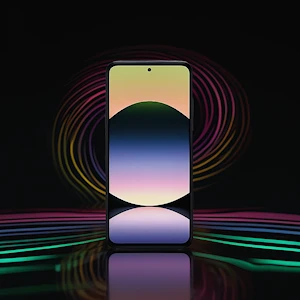Xiaomi Redmi Note 14 4G: The Everyday Workhorse with a Few Compromises
Let’s start with the elephant in the room: this is a 4G phone in a world obsessed with 5G. But before you write it off, let me tell you—this device knows its audience. If you’re in a region where 5G is still a novelty (or you just don’t care about bleeding-edge speeds), the Redmi Note 14 4G is here to deliver where it matters most: battery life, screen quality, and reliability.
The Screen: A Mid-Range Marvel
That 6.67-inch AMOLED display is the star of the show. With 120Hz refresh rate and 1800 nits peak brightness, scrolling feels buttery smooth, and Netflix binges look fantastic even in sunlight. Xiaomi’s thrown in PWM dimming at 1920Hz, which means fewer eye-strain headaches during late-night doomscrolling. But here’s the catch: colors can oversaturate slightly in “Vivid” mode. Switch to “Natural” if you prefer accuracy over pop.
Performance: Solid, Not Spectacular
The Helio G99 Ultra chipset (built on a 6nm process) handles daily tasks like a champ. Apps open quickly, and casual games like COD Mobile run smoothly at medium settings. But push it with Genshin Impact, and you’ll see frame drops—this isn’t a gaming beast. The cooling system helps, but it’s more about preventing throttling during long TikTok sessions than hardcore gaming. The 6GB RAM feels tight if you’re a tab-hoarder; spring for the 8GB variant if it’s available.
Battery Life: The Marathon Runner
With a 5500mAh battery, this phone laughs at your “low battery anxiety.” I’m talking 8+ hours of screen-on time with 120Hz enabled. Even heavy users will make it through a full day. The 33W charging? It’s no 67W HyperCharge, but 0-100% in 70 minutes is respectable. Just don’t expect wireless charging—this is a budget king, not a luxury flagship.
Cameras: Daylight Hero, Low-Light Zero
The 108MP main sensor (Samsung HM6) shines in bright conditions. Photos are crisp, with decent dynamic range. Pixel-binning kicks in for 12MP shots, but don’t expect Pixel-level magic. The 2MP macro and depth sensors? Mostly filler—you’ll use them once and forget they exist. Night mode struggles with noise, and the 20MP selfie cam over-smooths skin. For Instagram snaps and family photos, it’s fine. For photography enthusiasts? Look elsewhere.
Design & Durability: Practical, Not Precious
At 196g and 8.2mm thick, it’s sturdy but not sleek. The IP54 rating means it’ll survive a spilled coffee or rainy walk, but don’t take it swimming. The Gorilla Glass 5 front picks up micro-scratches easily—slap on a screen protector. No LED notifications? A bummer for folks who live by the blink.
HyperOS: Xiaomi’s Clean(er) Slate
Android 14 with HyperOS feels snappier than old MIUI. Bloatware’s been trimmed, and animations are smoother. But ads still lurk in system apps (disable them in settings). Google Services are fully supported, and Xiaomi promises 2 major OS updates—decent for the price.
Who’s It For?
Buy this if:
- You want a big, beautiful screen without breaking the bank
- Battery life is your #1 priority
- You’re okay trading 5G and flagship cameras for value
Skip this if:
- You game heavily or edit 4K videos
- Low-light photography matters to you
- You need the latest connectivity (5G, Wi-Fi 6E)
The Verdict: My Personal Take
If I were buying a phone under $300 today, I’d seriously consider the Redmi Note 14 4G. That screen and battery combo is addictive, and HyperOS fixes a lot of Xiaomi’s old quirks. But as a power user who tinkers with GCam ports and needs faster storage, I’d miss the snap of a Snapdragon 7 Gen 3 or UFS 3.1. For my mom? Dad? College roommate? Absolutely. It’s the “set it and forget it” daily driver that won’t leave you stranded at 8PM with a dead battery.
Final call: Xiaomi nailed the essentials here. Just know where the corners were cut.
